
Animal
14:48, 30-May-2019
Snakes: We don't bite without a reason
Updated
19:11, 30-May-2019
By Xu Chenlu
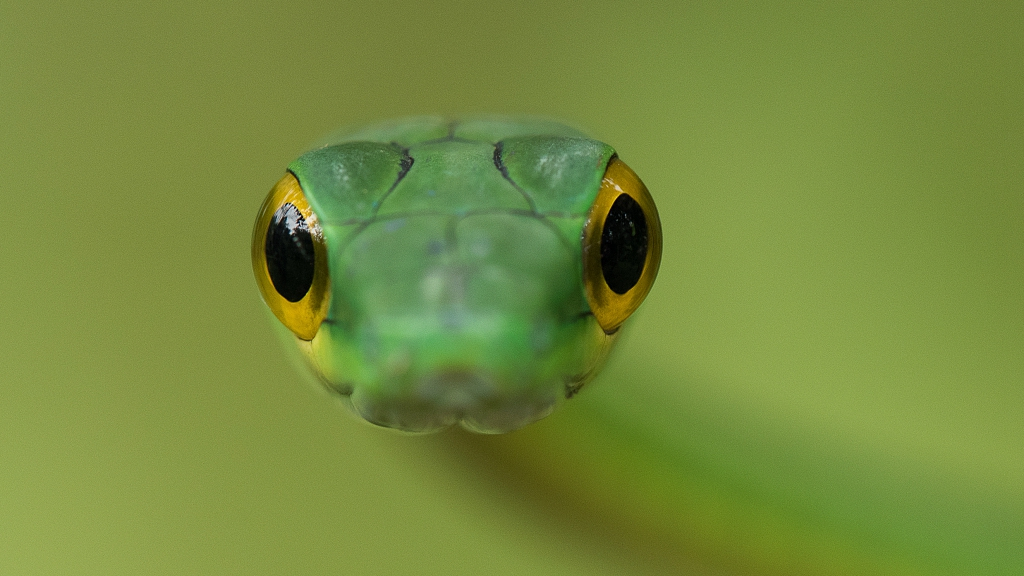
During the warm and humid weather in May and June, mountaineers and hikers preparing for their trips need to keep another thing in mind: snakes.
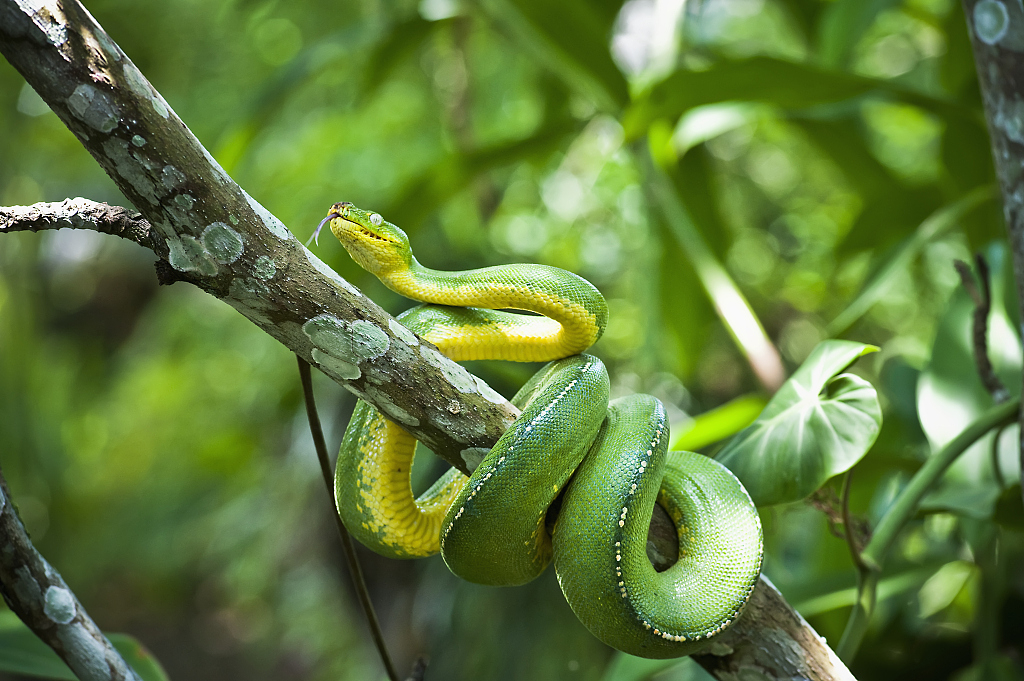
Stejnegeri pit viper is dangerous because of its strong venom. /VCG Photo
Stejnegeri pit viper is dangerous because of its strong venom. /VCG Photo
Snakes are active in spring and summer with the warmer weather bringing out more of its prey, including rodents, lizards, birds and small mammals.
To prevent any possible harm during these unpleasant encounters, some argue that the best choice is to kill the snake. Unfortunately, this is not a smart choice, since snakes don't attack unless they're frightened.
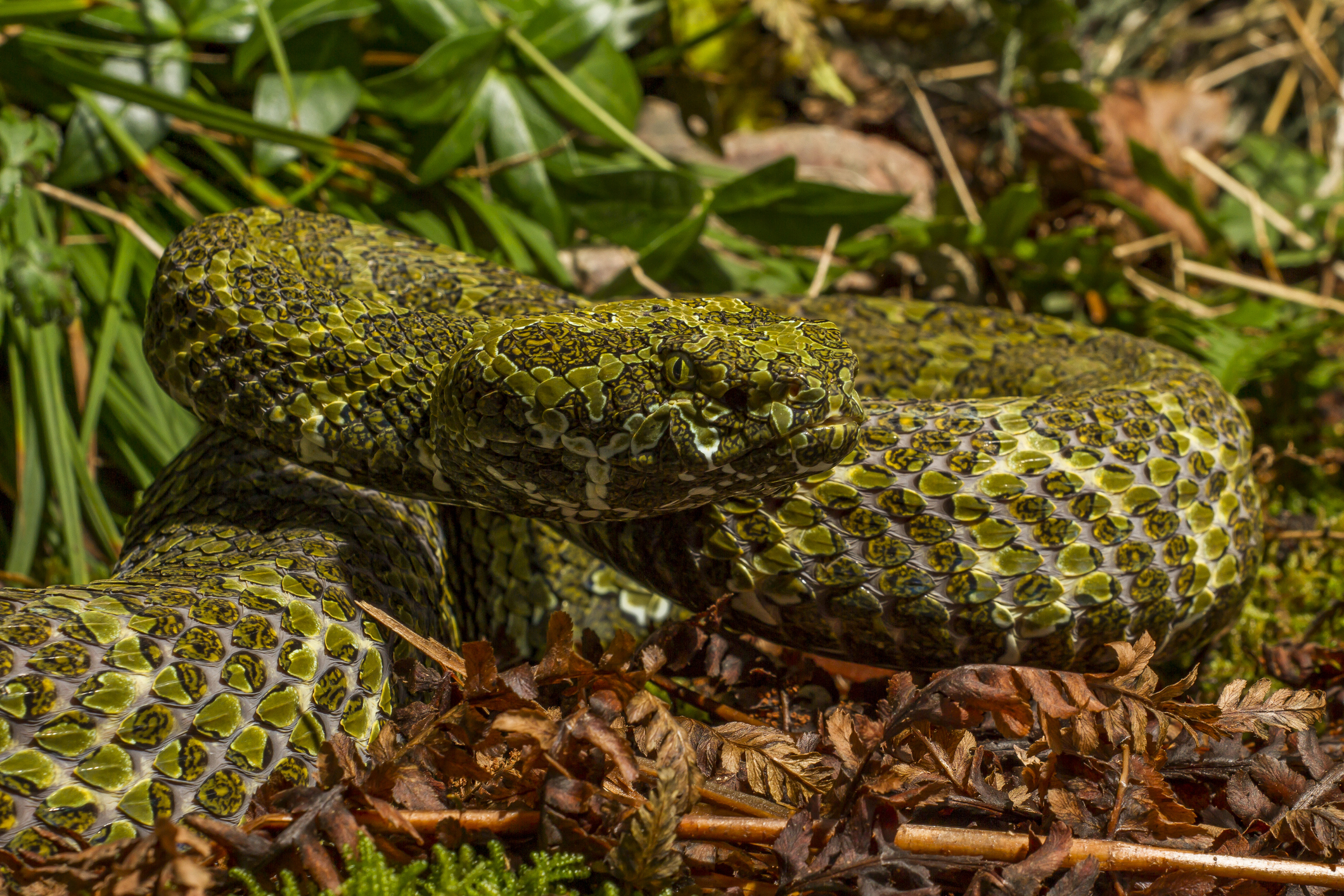
Endangered Mangshan pit viper. Its venom is fatal. /VCG Photo
Endangered Mangshan pit viper. Its venom is fatal. /VCG Photo
In regards to our fear of them, snakes are much more frightened of us. Most snakes, such as vipers, will flee away from a human if they are given opportunities to escape.
As for larger species like cobras and mambas, or snakes which need to protect its eggs and territories, their responses will be much more aggressive.
In this situation, they usually show warning signals before attacking. If these signs are misunderstood or ignored by humans, the consequences can be terrible.
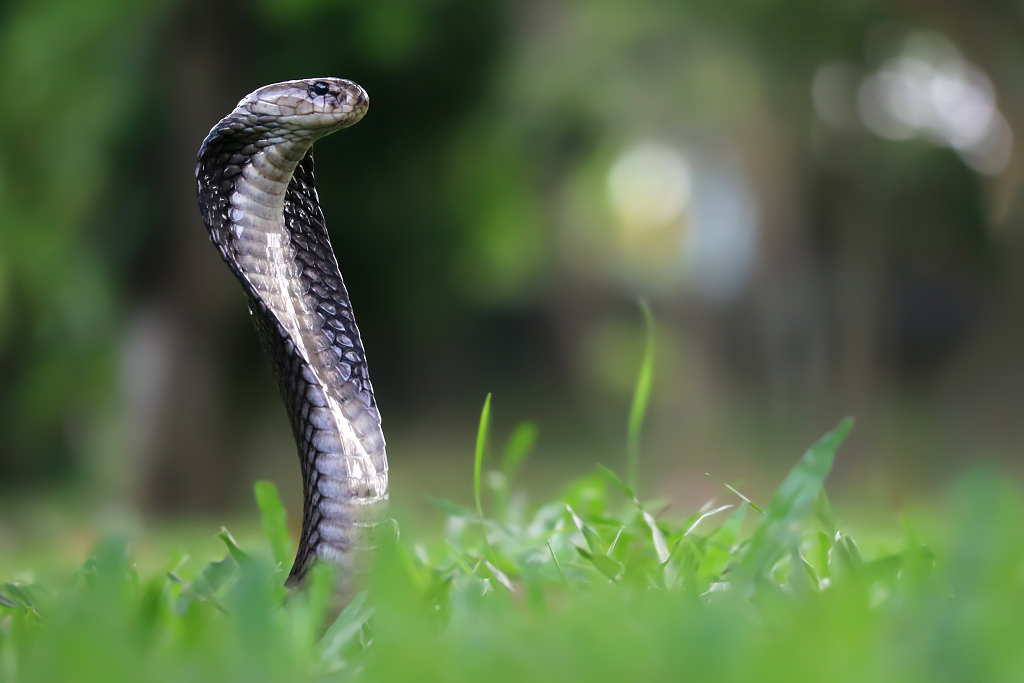
An aggressive cobra stands on its tail. /VCG Photo
An aggressive cobra stands on its tail. /VCG Photo
Another reason for not killing snakes, especially in a nature reserve or forest, is that the snake might be an endangered species. In China, snakes like the Mangshan pit viper and Burmese python are all endangered species under protection.
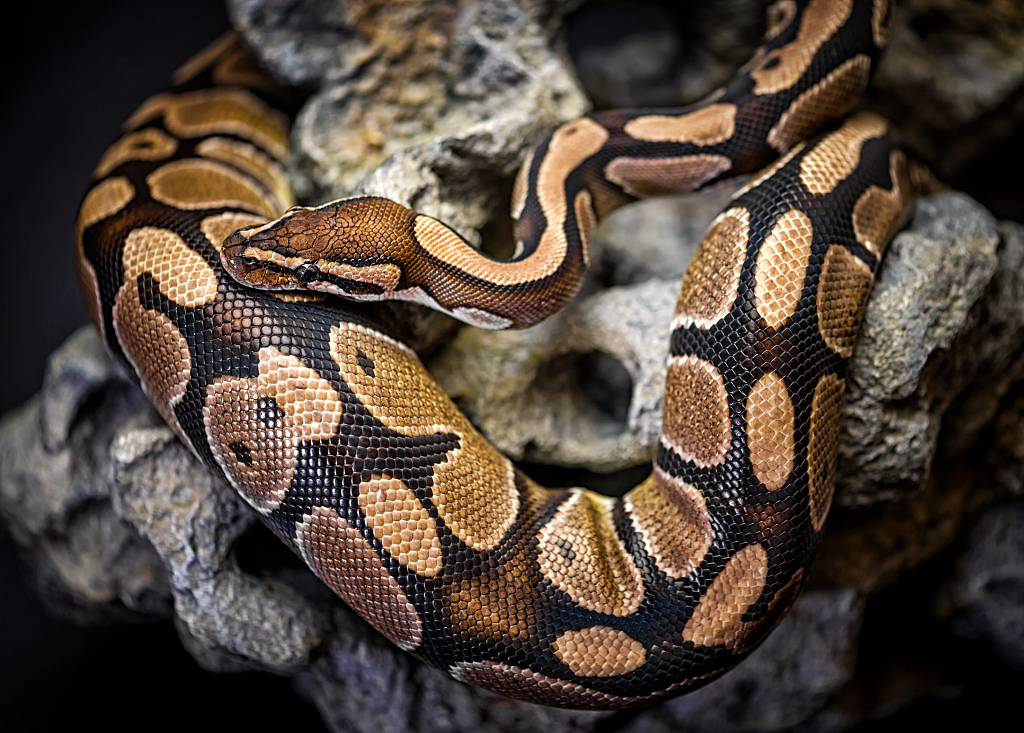
The Burmese python is under first-class state protection in China. /VCG Photo
The Burmese python is under first-class state protection in China. /VCG Photo
Based on these facts, here are a couple of strategies to keep in mind if you encounter a snake:
1. Be careful when walking in bushes, avoid stepping on branches or logs with suspicious stripes, since it could be a snake.
2. Wear pants and boots if you need to walk in bushes and forests.
3. Be aware of the signs that snakes are showing. If a snake stands almost on its tail, that means it is alert and can attack at any time. If this happens, slowly back away from it.
4. If a snake sneaks in your house, call the police immediately. Do not try to handle this by yourself.
5. Learn about the snakes with fatal venom; this helps a lot when you meet one.
6. If you get bitten, stay calm. Do not pick up or strike the snake since this will lead to the second bite. Call an emergency number immediately, apply a compression bandage over the bite and immobilize the limb as soon as possible.
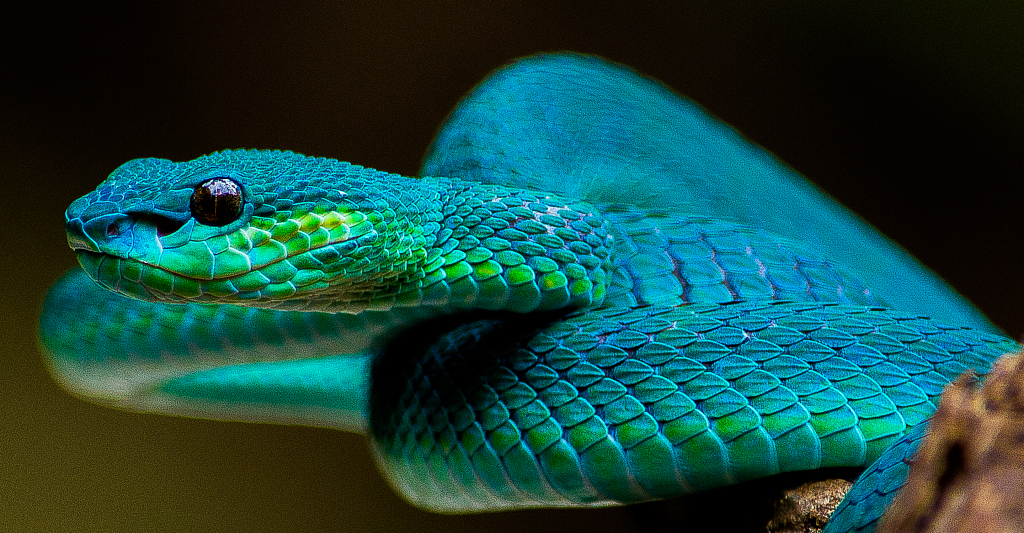
A viper snake with blue skin. /VCG Photo
A viper snake with blue skin. /VCG Photo
(Cover image via VCG.)
(If you want to contribute and have specific expertise, please contact us at nature@cgtn.com.)

SITEMAP
Copyright © 2018 CGTN. Beijing ICP prepared NO.16065310-3
Copyright © 2018 CGTN. Beijing ICP prepared NO.16065310-3